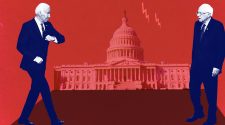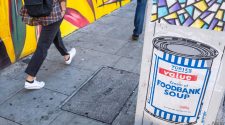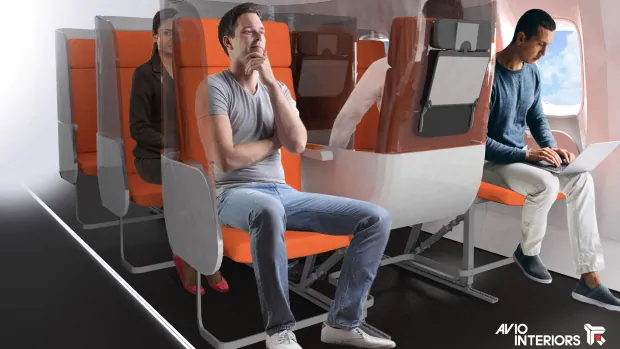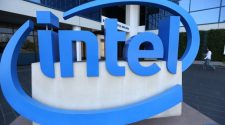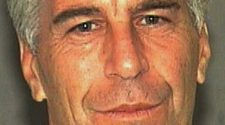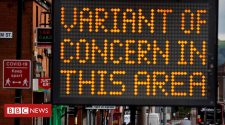Daniel Gooch, the president of the Canadian Airports Council, was winging his way to Vancouver from Ottawa for meetings on March 12 just as the coronavirus was about to upend the world.
“By the time I landed, most of my meetings were cancelled,” he told CBC News.
The next morning, he got on a plane and returned home to Ottawa. It was his last business trip.
“It’s going to be a very long recovery,” Gooch said. “The airports are empty, the revenue has almost completely stopped and we don’t know when it will come back.”
If and when air travel does come back, technology could play a big role, as airports and airlines around the world explore and develop some sci-fi-like approaches to help passengers feel safer.
“Welcome to the airline flight of 2021. Before boarding, walk through the disinfection tunnel and the thermal scanner and have your bags sanitagged,” begins a report, The Rise of Sanitized Travel, published by an aviation marketing consultancy in April.
Flying for business and pleasure is still largely grounded, down more than 90 per cent in North America since March, according to passenger numbers from the U.S. Transportation Security Administration.
Air Canada has also said it is laying off at least half its staff.
WATCH | The president of the Canadian Airports Council talks about border innovations:
The skies are open but many fliers are fearful, worried that airports and hours confined with strangers inside a plane are just vectors for the virus, creating risks many are not willing to take.
Wanlin Zhong had to fly home last week from Washington, D.C., to China. She arrived at the airport in a mask plus a plastic face shield over top. She was also wearing gloves. As an international student in the U.S., her visa was running out. If not, she said, “I wouldn’t get on a plane, I’d just stay home and not go out.”

Airports and airlines worldwide are struggling to decipher what it will take to restore confidence, rushing to come up with a kind of sanitation security, an overhaul even greater perhaps than the security measures put in place after 9/11.
“The one key characteristic of an airline that’s going to thrive on the other side of this crisis — it’s an airline that can be nimble,” said Josh Earnest, chief communications officer for United Airlines.
With the low volume of travellers, physical distancing in airports is possible now, but imagine what happens when millions return.
“With social distancing of about two metres between passengers,” said Gooch, “it takes about 350 metres just to accommodate the security screening line for one wide-body aircraft.”
Touchless travel
A couple of flights at once would easily jam up an airport concourse, creating just one of a myriad of challenges.
Sanitation is the primary one, say many aviation experts, and futuristic solutions span everything from more touchless travel, avoiding screens that might be infected, to clean portals — scanners that could detect viruses.
In Hong Kong’s airport, cleaners are spraying an antimicrobial coating on the dozens of places a traveller touches most — from escalator handrails to elevator buttons.
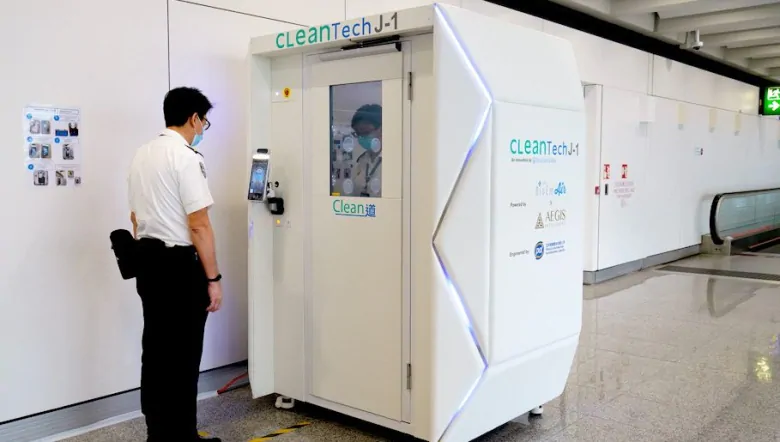
The airport is also testing a “Clean Tech” booth that monitors temperature before a person enters for about 40 seconds as it sprays a light disinfectant, avoiding the face. It’s meant to kill germs on the surface of the body. So far, it’s only being tested on staff, but the airport authority said it will review using it for passengers.
Pittsburgh’s airport is trying out robotic floor cleaners that can cover millions of square feet in an airport, working 24/7. The robots use disinfectant and shoot out a burst of UVC light as an added layer of sanitation.
“UVC light has been used in hospitals for decades as a way to kill microorganisms,” said Katherine Karolick, senior vice-president of information technology at Pittsburgh International Airport.
“Adding that extra layer of ultraviolet light to the scrubbers helps ensure that even more.”
UVC light to neutralize viruses?
UVC light is also used in other devices being promoted for airports like the Cleanse Portal, a doorway-shaped arch that emits far UVC light meant to inactivate pathogens like viruses on the body.
The Florida company selling the portal, Healthe, said low exposure to the short waves of far UVC light is safe for humans and it is in the process of applying for approval from the U.S. Food and Drug Administration. It’s already sold the device for office use.
In Falls Church, Va., Christian Pinkston installed one in his strategic communications office, along with troffers — ceiling light fixtures — that use HEPA filters and UV LED light to clean the air in high-traffic areas.
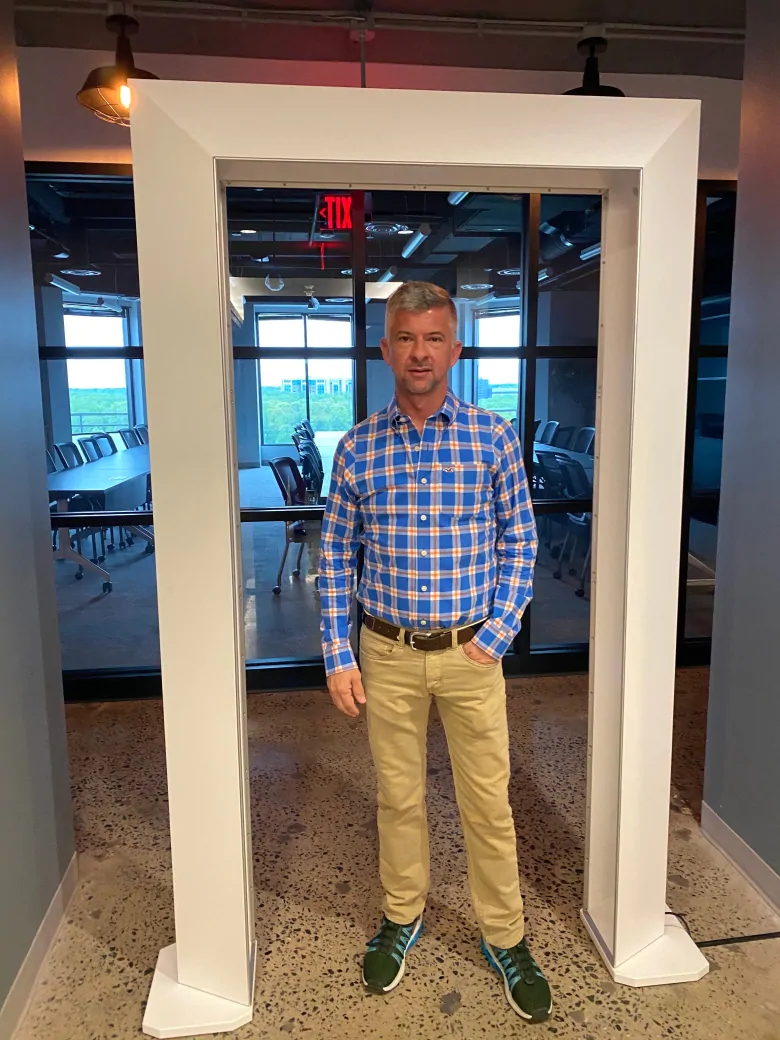
“It’s constantly recirculating the air at a pretty high volume through a very powerful UV tube. It’s killing anything airborne. I could definitely see this being used at airports,” Pinkston said.
The technology is rapidly evolving and no one solution will work. Instead, airport experts are looking at layers of protection, for now and for the future.
“This pandemic isn’t a one-off. There will be other pandemics we have to deal with,” said Katherine Karolick at the Pittsburgh airport.
“Are we going to continue with super high levels of disinfection and social distancing and wearing masks for the rest of our lives? Probably not, but I think some level of these measures will continue.”

But airlines cannot wait for this pandemic to pass. Many are sending notices to customers to try to reassure them that hyper-sanitation is now a key part of safety.
United Airlines, for example, has purchased 750 hand-held electrostatic sprayers — similar to those used to kill germs in hospitals — and promises to spray every aircraft between every flight, starting next month.
But some aviation analysts suggest airlines will have to go further, maybe putting a sky janitor or cleaner on every flight to wipe down the bathrooms after use by a specific number — maybe 10 — passengers.
Trying to be ‘part of the solution’
The report last month, The Rise of Sanitized Travel by SimpliFlying, an aviation marketing consultancy, makes 70 suggestions. They include the creation of a Transportation Health Authority in the U.S. or across countries to establish standardized health and sanitation guidelines.
Aviointeriors, an Italian company that designs airline cabins and seats, spent the early lockdown in Italy coming up with ideas to protect travellers. Their business to design cabin interiors and aircraft seats had ground to a complete halt.
“It was one of our shareholders who said, ‘You’ve got to be part of the solution,’ ” said Aviointeriors president Paolo Drago. “We had 10 ideas. We chose three to go into design and get patented.”
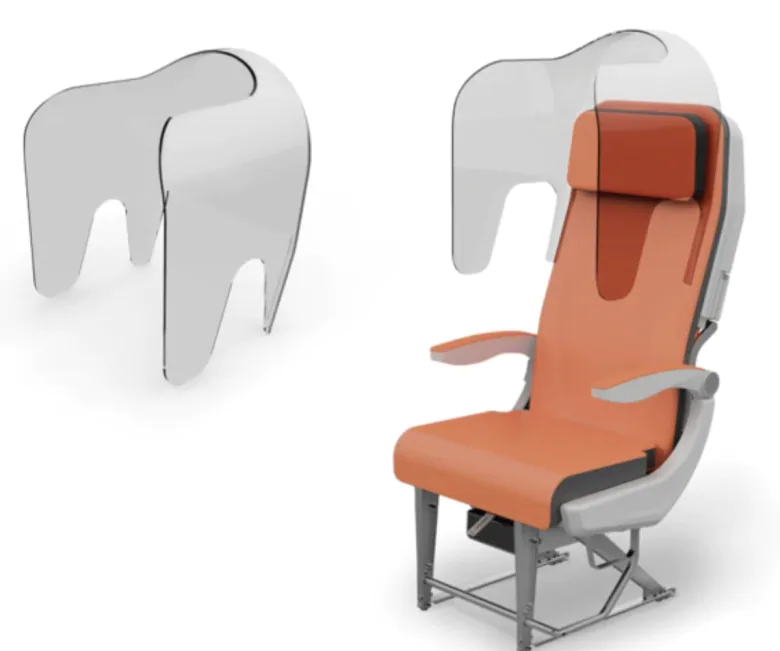
One is Glassafe, a transparent shield constructed of plastic that fits around the sides and top of an airline seat, making a barrier between you and your seatmate.
It’s portable, could be folded and stored in a sanitized envelope under the seat or given out like a blanket or a pillow and then taken out and attached to the seat after takeoff.
“We were trying to limit the breath propagation,” said Drago.
Looking ahead
The company is in advanced talks with about 20 airlines, including some in North America, he said.
Another more futuristic product is a middle seat that faces backward and has a shield, both for sanitation and privacy.
The Janus seat, named after the ancient Roman god who looks in both directions, is “not the right tool for now,” said Drago, because the prototype would require at least eight months to manufacture and be certified, but it could be incorporated into flying in the future.

“A customer encouraged us,” Drago said, “saying [that] at a funeral, there are people crying and there are people producing the tissues for the crying.”
One of the obvious changes already is the increasing number of masks in airports and on airlines. In Canadian airports, a traveller must don one. The International Air Transport Authority and many airlines urge all travellers to cover their faces.
WATCH | Industry experts look to technology to help air passengers feel safer:
“Even a month ago, the idea of requiring all flight attendants and customers to wear a mask on board the aircraft was unthinkable, too impersonal or anxiety-causing,” said Earnest.
“Now when we see somebody wearing a mask, it puts people at ease because we know they’re doing the responsible thing.”
Those kinds of societal norms are changing, said Earnest.
“It means the expectations we have around travel and flying in an aircraft are also going to change.”

